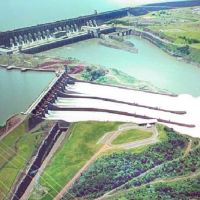Mayfly in the Classroom: the potential to use the mayfly in engaging education and citizen science projects
Guest author: Paul Gaskell, Trout in the Town Project Manager with the Wild Trout Trust, UK
As programme manager for the Wild Trout Trust’s “Trout in the Town” project, a significant proportion of my role involves generating public interest and a sense of custodianship within local communities for their urban river corridors. Soon after the 2008 inception of the project, it became apparent that a cheap and simple educational tool would be a valuable means of engaging children, their families and teaching staff with the needs and reciprocal benefits of healthy urban watercourses. The “Trout/Salmon in the Classroom” initiatives developed in North America (e.g. Trout in the Classroom) and used so successfully in some UK settings (e.g. Wandle Trust and Clyde River Trust) have been brilliantly successful where sufficient funding and technical resources are available. However, in many schools – both rural and urban – the financial means and high degrees of specialised technical support may be scarce. Drawing on my background in laboratory and field studies of freshwater invertebrates, I wondered whether a more simple and cheap option could be found for invertebrate indicator species, whilst still retaining the vital messages relating to ecosystem health. I particularly liked the idea of using the mayfly’s iconic status (amongst writers as well as anglers!) and incorporating the very Shakespearian sex and death overtones to their lifecycle to make an impression.
Even more importantly, the project should require physical visits to a local river – first of all to collect the mayfly larvae; and then subsequently to carefully release the emergent adult flies back to their natal home. I had a strong desire to ensure that the learning activities should take pupils and teachers out of the classroom environment – as well as to bring some of that wildness back into the classroom setting to be cared for and studied for a short while. But we are getting ahead of ourselves; there was still a robust apparatus and method to develop. Talking with Dr. Craig Macadam of Buglife and Riverfly/Ephemeroptera Recording schemesput me on to a reference to an Australian paper detailing simple and cheap means of hatching adult mayflies (for the purposes of cross-validating larval and adult taxonomic keys).
 Some domestic “kitchen-and-bedroom-based” studies later – I was happy that the method could be adapted easily to the classroom environment. The methodologies, typical schedule and all supporting resources (including ideas for lesson content and linked themes – such as water quality/quantity and the interlinked nature of riparian and aquatic foodwebs) are available for free on www.mayflyintheclassroom.org . In some ways, even ignoring the sub-twenty quid price tag (c.f. around £750 to £1000 for trout or salmon in the classroom) there are lots of things to recommend mayflies (and in the future “Caddis in the Classroom”) as educational icons. Their role of central conduit for carbon fixed during photosynthesis (whether autochthonous or allochthonous) in the foodwebs of both aerial and aquatic settings is a fantastic illustration of the importance of the small things that run our planet. We would do well to let everyone, whether young or old, into secrets like these.
Some domestic “kitchen-and-bedroom-based” studies later – I was happy that the method could be adapted easily to the classroom environment. The methodologies, typical schedule and all supporting resources (including ideas for lesson content and linked themes – such as water quality/quantity and the interlinked nature of riparian and aquatic foodwebs) are available for free on www.mayflyintheclassroom.org . In some ways, even ignoring the sub-twenty quid price tag (c.f. around £750 to £1000 for trout or salmon in the classroom) there are lots of things to recommend mayflies (and in the future “Caddis in the Classroom”) as educational icons. Their role of central conduit for carbon fixed during photosynthesis (whether autochthonous or allochthonous) in the foodwebs of both aerial and aquatic settings is a fantastic illustration of the importance of the small things that run our planet. We would do well to let everyone, whether young or old, into secrets like these.
















